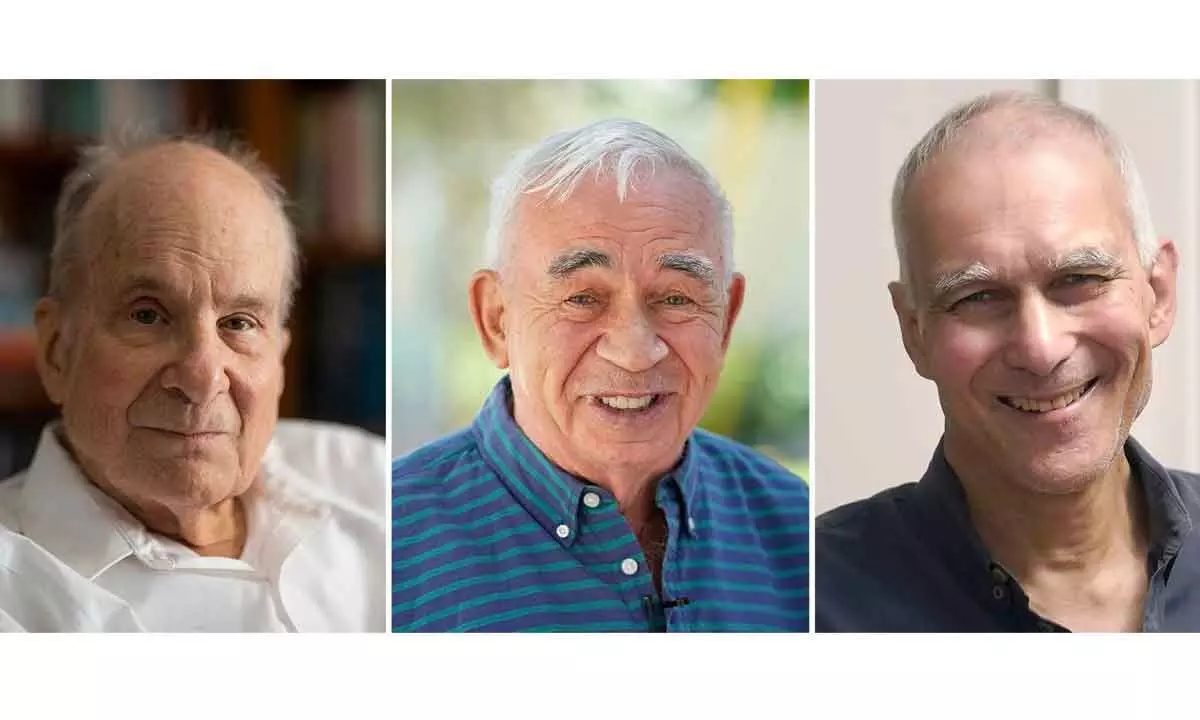Live
- All you need to know about PAN 2.0
- Akasa Air redefines travel experience with industry-first offerings
- MP: Residents stage protests against liquor shop in Indore
- Telugu Actor Shri Tej Booked for Alleged Cheating and False Promise of Marriage in Live-in Relationship
- Toyota Kirloskar Motor Celebrates 1 Lakh Urban Cruiser Hyryder on Indian Road
- MLS: New York City FC part ways with head coach Nick Cushing
- Delhi CM says Centre cutting AAP voters’ names from rolls, BJP hits back
- Hyderabad Metro Rail Phase-II Works to Begin in Old City in January 2025
- Odisha: 668 persons killed in human-elephant conflicts in last three years
- DEFENDER JOURNEYS: TO EMBARK ON ITS THIRD EDITION FROM NOVEMBER 2024
Just In
Chemistry Nobel goes to trio behind quantum dots


‘Very unfortunate’, says jury on leak of laureates’ names
Stockholm: Three scientists in the United States won the Nobel Prize in chemistry Wednesday for their work on quantum dots — particles just a few atoms in diameter that can release very bright colored light and whose applications in everyday life include electronics and medical imaging.
Moungi Bawendi, of MIT; Louis Brus, of Columbia University; and Alexei Ekimov, of Nanocrystals Technology Inc, were honoured for their work with the tiny particles that “have unique properties and now spread their light from television screens and LED lamps”, according to the Royal Swedish Academy of Sciences, which announced the award in Stockholm.
The suspense surrounding the academy's decision took an unusual turn when Swedish media reported the names of the winners several hours before the prize was announced. The advance notice apparently came from a news release sent out early by mistake. When asked about the mistake, Hans Ellegren, secretary general of the Royal Swedish Academy of Sciences, said it was ‘very unfortunate’ that the news was leaked.
Quantum dots are semiconducting crystals just a few nanometres wide. They are typically made from combinations of transition metals and/or metalloids – most commonly cadmium selenide and cadmium telluride – just like regular semiconductors.
Changing the size of a quantum dot changes its properties, in particular its fluorescence, meaning they can be tuned to produce different colours. The smaller the nanoparticle, the narrower the wavelength it emits – smaller dots emit blue light while larger ones emit red light.
In 1981, Ekimov a solid-state physicist working at the time at the Vavilov State Optical Institute in Russia, succeeded in creating size-dependent quantum effects in coloured glass. The colour came from nanoparticles of copper chloride and Ekimov demonstrated that the particle size affected the colour of the glass via quantum effects. This was the first time someone had succeeded in deliberately producing quantum dots.
A few years later, unaware of Ekimov’s study, Brus, a US chemist studying colloidal semiconductor nanocrystals at AT&T Bell Laboratories, became the first scientist to prove size-dependent quantum effects in particles floating freely in a solution.
He too understood that he had observed a size-dependent quantum effect.
Continuing with efforts to produce higher quality nanoparticles, in 1993 Bawendi, a research leader at the Massachusetts Institute of Technology in the US, had a major breakthrough when his group succeeded in growing nanocrystals of a specific size.
He was credited with revolutionising the chemical production of quantum dots, resulting in almost perfect particles – an essential step for them to then be mass produced. Now quantum dots are found in a wide range of commercial products, across scientific disciplines, from computer monitors and television screens based on QLED technology, to biomedical imaging.
‘Research is still very intense and there are applications expected or being heavily researched in producing photons for quantum communication, for flexible electronics for sensors for improving solar cells, making them better or cheaper … among many other things,’ said Heiner Linke, member of the Nobel committee for chemistry during the prize press conference.

© 2024 Hyderabad Media House Limited/The Hans India. All rights reserved. Powered by hocalwire.com






